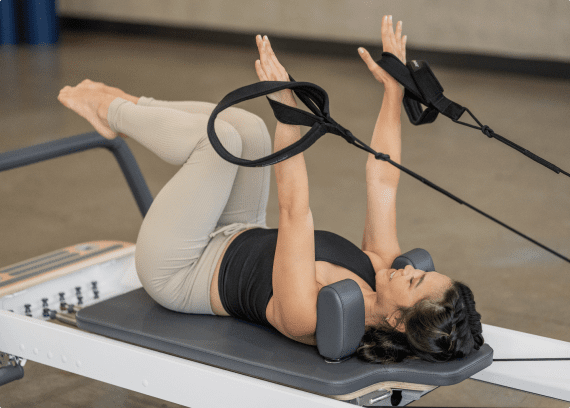Grow Your Business in Any Economic Climate
Grow Your Business in Any Economic Climate
by Ron Thatcher
As seen in the summer 2009 Balanced Body Pilates COREterly
In-Shape Health Club in Stockton, California has experienced tremendous growth, improved sales, and growing profitability during these trying economic times. Although we are based in Central California, arguably ground zero for the housing melt down, In-Shape was fortunate enough to see the coming economic storm. With twenty-plus years in the fitness industry and experience and knowledge of downward economic conditions, the management team helped our business to develop and grow by utilizing intelligent and well planned decisions.
Hiring the best…
We are in the people business and recognized the need to attract and recruit employees from a superior talent pool. Analyzing our historical performance and identifying the intangibles that were responsible for past success, we quickly identified the available resources with regard to talent pool. Generally speaking, the majority of health club management staff and employees consist
primarily of entry level employees and temporary employment seekers looking to find a more permanent career.
When a country is in the midst of a tough economy some of the best, most experienced, highest paid business executives get laid off and decide to enter the health club business. This has happened during every economic recession that has impacted health clubs over the last 20 years. In short, In-Shape hired top level executives from the auto industry, financial firms and real estate. Instead of being conservative and cutting pay, like other less aggressive companies,
we attacked and focused our energy and resources on recruiting only the best of the best.
Grass Roots Marketing
With less money to spend on marketing, health clubs flourish from traditional and grass roots marketing techniques. Over the last five years banks and venture capital companies invested large quantities of capital into the health club industry. This so called “Gravy Marketing” was wasted on television ads, internet marketing, and radio spots. Although I appreciate this type of low sweat approach, it is not always the most effective and does not have the traditional
return on investment as the grass roots systems that built the fitness industry.
The health club business was built on guerrilla marketing: lead boxes, handing out passes, making phone calls and setting up on-sites. These proven tactics and techniques built the very business that we operate today. In-Shape cut out wasted advertising dollars and focused on using these methods to create a revenue stream.
A self-reliant business model
Because of the youth of our industry, our early beginnings were not long ago. Our business was not a derivative of banking or investment venture capital. Typically, companies built a club and paid it off, saved some of the money and built another club. Banks just wouldn’t give us money; they were too leery. The basic health club business model design originated from a non-traditional, non-bank-reliant system.
In other words, if the banks don’t give us any money or float us a loan, we do just fine. To give you an example, if you want to buy a house or a car, maybe even acquire a new business, you must get a loan from the bank. This means, if you don’t have a loan from the bank, you cannot do business. The fitness industry can operate fully and completely without any type of bank approval.
This one I have to chalk up to the luck of the Irish, or in this case the unlucky souls who are out of work and looking to land a new job. In short, people who are out of work have free time and want to improve the way they look and feel so they are more desirable to hire! Although we hear the objection, “it costs too much to join” on a regular basis, becoming a member of a health club may be one of the most affordable ways to spend hard earned dollars. The truth of the matter is that for thirty-nine dollars a month one can enjoy most health club facilities 24 hours a day, seven days a week, and if it is being utilized, the value is immeasurable.
In closing, from January 2007 to May 2009, In-Shape grew its Personal Training and Pilates departments from $270,000 a month to over $700,000 a month during the worst economic downturn of our generation. I honestly feel that the methods outlined here in this article were crucial to the ongoing success of In-Shape. I have written this article to improve our industry as a whole, and I hope that it offers some valuable insight into the hard working men and women in the industry who are so dedicated to improving our business.
Ron Thatcher
Ron is the author of 11 popular health club management books and has recently
released Selling Personal Training II EFT sales manual.






